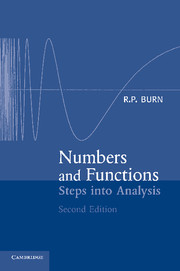Preface to first edition
Published online by Cambridge University Press: 06 July 2010
Summary
This text is written for those who have studied calculus in the sixth form at school, and are now ready to review that mathematics rigorously and to seek precision in its formulation. The question sequence given here tackles the key concepts and ideas one by one, and invites a self imposed precision in each area. At the successful conclusion of the course, a student will have a view of the calculus which is in accord with modern standards of rigour, and a sound springboard from which to study metric spaces and point set topology, or multi-dimensional calculus.
Generations of students have found the study of the foundations of the calculus an uncomfortable business. The reasons for this discomfort are manifold.
(1) The student coming from the sixth form to university is already familiar with Newtonian calculus and has developed confidence in the subject by using it, and experiencing its power. Its validity has been established for him/her by reasonable argument and confirmed by its effectiveness. It is not a source of student uncertainty and this means that an axiomatic and rigorous presentation seems to make heavy weather of something which is believed to be sound, and criticisms of Newtonian calculus seem to be an irritating piece of intellectual nit-picking.
[…]
- Type
- Chapter
- Information
- Numbers and FunctionsSteps into Analysis, pp. xii - xxPublisher: Cambridge University PressPrint publication year: 2000



